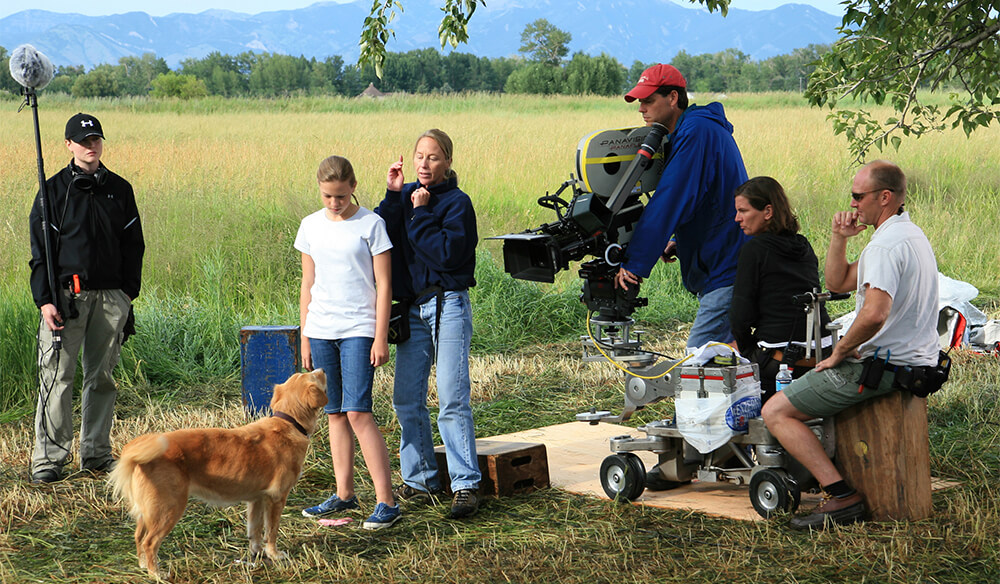
Introduction:
Filmmaking is an intricate process that requires careful planning and coordination. When your script involves working with kids and animals, scheduling becomes even more crucial. The unpredictable nature of children and the unique requirements of animals pose significant challenges for filmmakers. In this blog, we will explore the key considerations when scheduling a film that involves kids and animals, emphasizing the importance of flexibility, safety, and effective communication. By understanding the specific needs and potential risks associated with these factors, filmmakers can navigate the complexities and create a successful production.
Flexibility and Patience:
Working with kids and animals requires a high degree of flexibility and patience. Children have limited attention spans and may need frequent breaks, rest periods, and time for schooling. Animals, on the other hand, can be unpredictable, requiring additional time for training and acclimation to the set. Scheduling must accommodate these factors by allowing for shorter working hours and providing adequate breaks. Flexibility in the shooting schedule allows for adjustments to meet the needs of the young actors and animal performers, ensuring their comfort and well-being on set.
Ensuring Safety and Welfare:
The safety and welfare of both kids and animals should be a top priority when scheduling a film. Proper supervision and adherence to legal and ethical guidelines are essential. When working with children, it is crucial to comply with labor laws and regulations governing child actors. Adequate rest periods, access to suitable facilities, and supervision by qualified professionals are necessary to ensure their well-being. Similarly, when incorporating animals into the production, it is essential to work with trained animal handlers who understand the specific needs and behaviors of the animals involved. Scheduling should allow for regular breaks, access to food and water, and a calm and controlled environment.
Effective Communication and Collaboration:
Clear and open communication is vital when scheduling a film involving kids and animals. Effective coordination between the director, production team, parents or guardians of child actors, and animal handlers is essential. Regular meetings and discussions help address any concerns, clarify expectations, and ensure everyone is on the same page. It is crucial to have a designated point of contact for the parents or guardians of child actors and maintain open lines of communication regarding scheduling, safety protocols, and any special requirements. Collaborating with animal trainers and handlers helps ensure the animals’ well-being and their ability to perform on set.
Double the Preparation Time:
Scheduling a film with kids and animals requires additional preparation time. Children may require auditions, rehearsals, and time to become familiar with the script and their roles. Animals often require training and conditioning to perform specific actions or respond to cues. It is crucial to allocate sufficient time for these preparatory activities to ensure a smooth production process. Additionally, scheduling buffer time for unexpected delays or difficulties is essential when working with unpredictable factors like children’s behavior or animal responses.
Consideration for Contingency Plans:
Despite careful planning, unexpected situations may arise when working with kids and animals. It is important to have contingency plans in place to address any unforeseen circumstances. This may include alternative scenes or actions that can be substituted if a child or animal is uncooperative or unable to perform as planned. Having backup performers or actors available, as well as alternative shooting locations or set-ups, can help navigate unexpected challenges and ensure continuity in the production schedule.
Conclusion:
Scheduling a film that involves kids and animals requires careful consideration of the unique challenges they present. Flexibility, safety, effective communication, and additional preparation time are crucial factors to keep in mind. By accommodating the needs of children and animals, maintaining a safe and controlled environment, and allowing for contingencies, filmmakers can navigate the complexities of working with these unpredictable elements. With proper scheduling and planning, filmmakers can create a harmonious and successful production that highlights the talents of young actors and the charm of animal performers while ensuring their well-being and a smooth workflow.